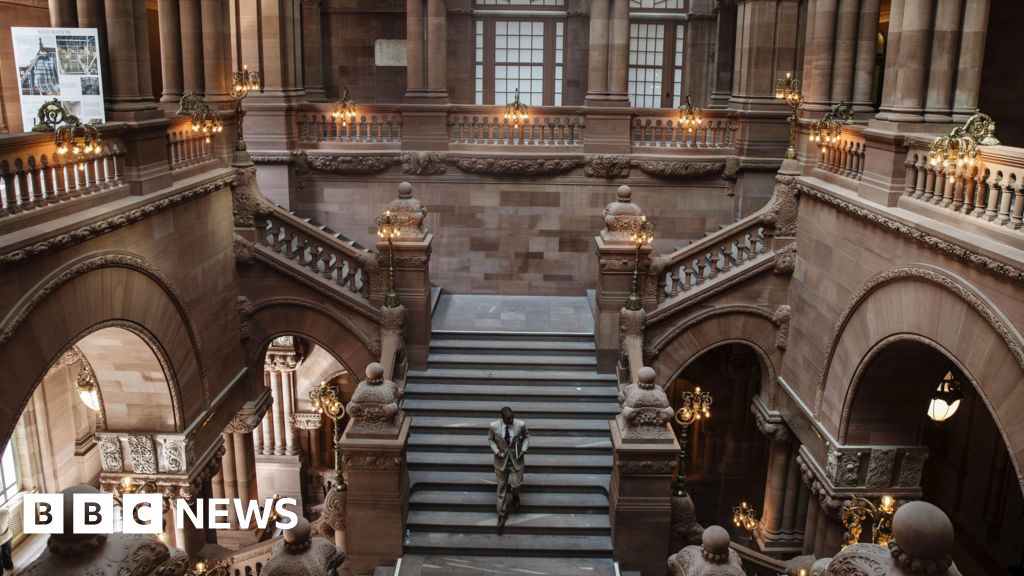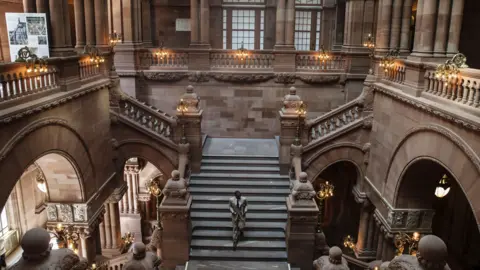 Getty Images
Getty ImagesAs sets of steps go, they don’t come much grander than those in the New York State Capitol in Albany.
Constructed in the second half of the 19th Century, the “million-dollar staircase” remains an impressive sight.
Part of the reason for its hefty price tag was that it used sandstone shipped from southern Scotland – Corsehill Quarry near Annan.
Stone cutters and carvers also made the journey from small towns and villages like Lochmaben, Creca and Brydekirk to help complete the project.
Their work, and the transatlantic links it forged, are being celebrated in an exhibition at Kirkcudbright Galleries.
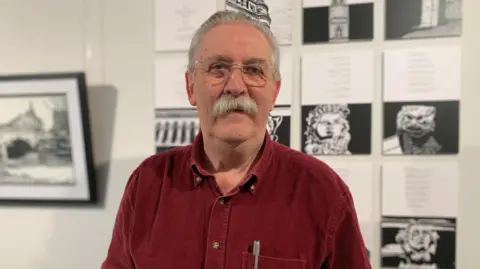
“It’s a project I’ve wanted to do for a number of years because I’m from near Annan, Eastriggs,” explained artist Hugh Bryden.
“So I grew up close to Corsehill Quarry, and I grew up in Annan with all the tales of how Annan sandstone went across to New York.”
As well as the 444-step staircase which is 119ft (36m) high, there are also 77 famous faces – and many more less famous ones – carved throughout its length.
It actually cost $1.5m to build – the equivalent of more than $30m (£25m) nowadays – and took 14 years to construct.
It was inspired by the Paris Opera House and designed by architect Henry Hobson Richardson who died before it was finished and the work was completed by Isaac Perry.
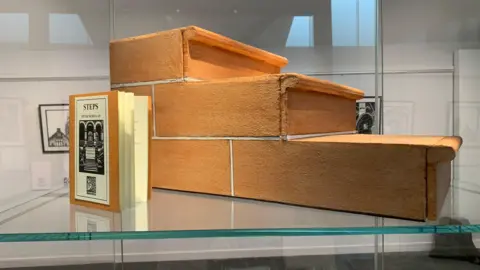
Hugh said the story of Scotland’s role was not an easy one to piece together.
“They were transporting 250 tonnes of sandstone a week across to build this magnificent staircase in Albany,” he said.
“But it really got forgotten because there was a fire in 1911 in Albany and the staircase was closed for years.
“I think it’s probably during that time that the myth grew up in Annan of the sandstone being dumped in New York harbour and the Statue of Liberty being built on it, which is a total myth.”
The skills of the stone workers from southern Scotland were also called into play for the staircase.
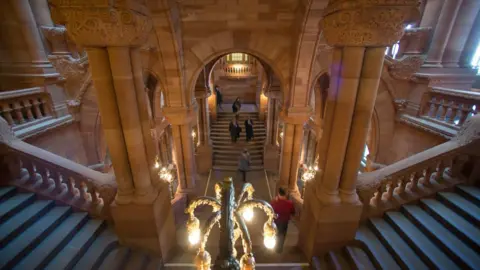 Getty Images
Getty Images“Over the period of building the staircase and then doing the magnificent carving on the staircase there were lots of of artists and carvers,” said Hugh.
“Some of the carvers did come from Brydekirk, Lochmaben and the Thornhill area.”
Due to the fire, the only records that remain are of one worker who died during construction but Hugh said the Scots left their mark in other ways on the creation of famous faces.
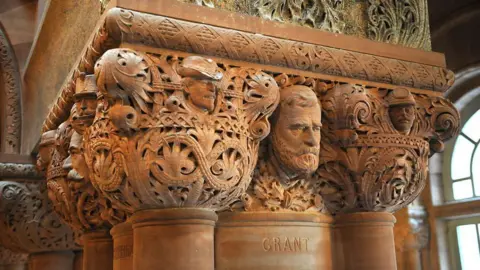 Getty Images
Getty Images“The remit was to carve famous Americans and they began and they carved poets, they carved generals, they carved the governors of New York State and they ran out at 77,” he said.
“Then, when they asked the architect: ‘What do you want us to do?’, he said: ‘As long as the heads are of this standard, I don’t mind’.
“So they began by carving Robert Burns and then they moved on to carving each other and their families.
“There are heads very reminiscent of the heads you see in Annan High Street on the staircase in Albany.”
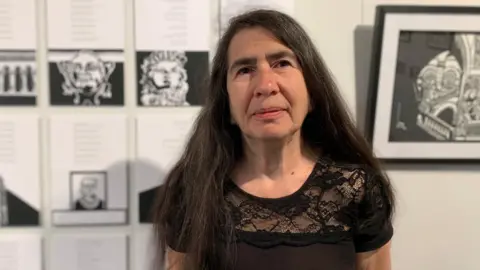
The Sandstone Steps exhibition is a true team effort between New York and southern Scotland involving art, poetry and music.
Hugh’s son Ben Bryden and his long-time collaborator Hugh McMillan have provided the Scottish input alongside New Yorkers Desiree Alvarez, Rohin Khemani and Maddy Rosenberg.
At its heart is a limited edition book in a three-tier staircase wooden box with each step holding its own “artistic event”.
Maddy said she was hooked by a project which gave her a “good reason to be back in Scotland”.
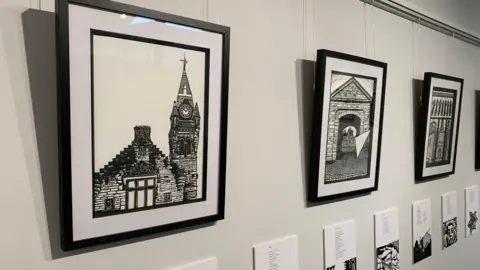
“He actually came to New York with a proposal that was mostly about the fantastic history and backgrounds of the sandstone,” she said.
She said it had never previously “clicked” that this was the type of stone used in the buildings referred to in the US as brownstones.
“Corsehill sandstone was the finest sandstone and that’s why the architects demanded it for the staircase,” she explained.
“They had worked on it in the brownstones in New York.
“It was the kind of sandstone that was very soft to the touch and can get really fine detail but then, once it hardens, it hardens.
“So it didn’t have the property of of basically wearing away and it could be used outdoors as well.”
 Getty Images
Getty Images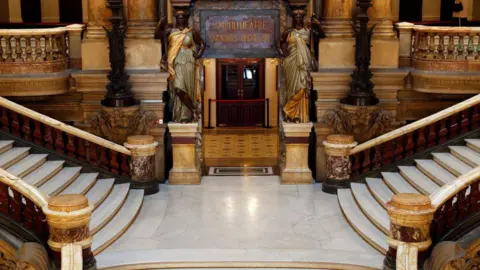 Getty Images
Getty ImagesShe said, like most New Yorkers, she had been unaware of the Scottish links.
“A lot of people don’t even realise that the capital of New York State is not New York City, it’s up the Hudson in Albany,” she said.
“I had visited Albany before and I had seen the magnificent staircase and Hugh had pictures of it – he had never seen it.
“He told me the story behind it and I said: ‘You have got to see the staircase’.”
So they took a tour and – over a period of a number of years – the project came together, resulting in the exhibition.
Both artists are happy with how it has turned out.
“There are lots of links with with New York and it’s sad that, by and large, they’ve been lost,” said Hugh.
“You know, it’d be nice to have those things back.
“So, maybe, this is a small start.”
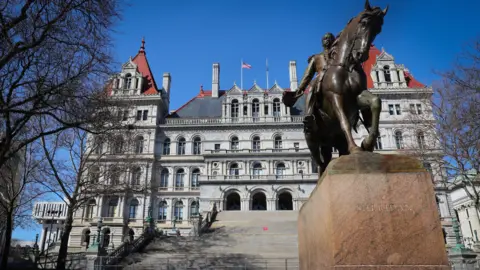 Getty Images
Getty Images
